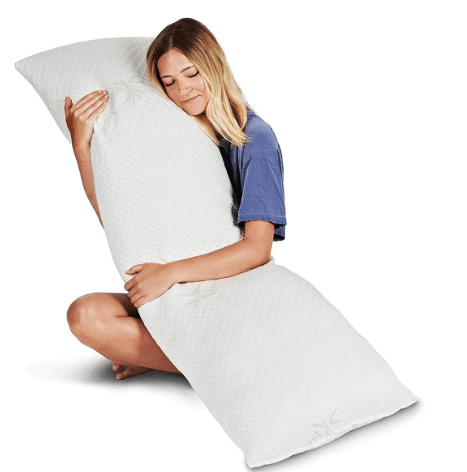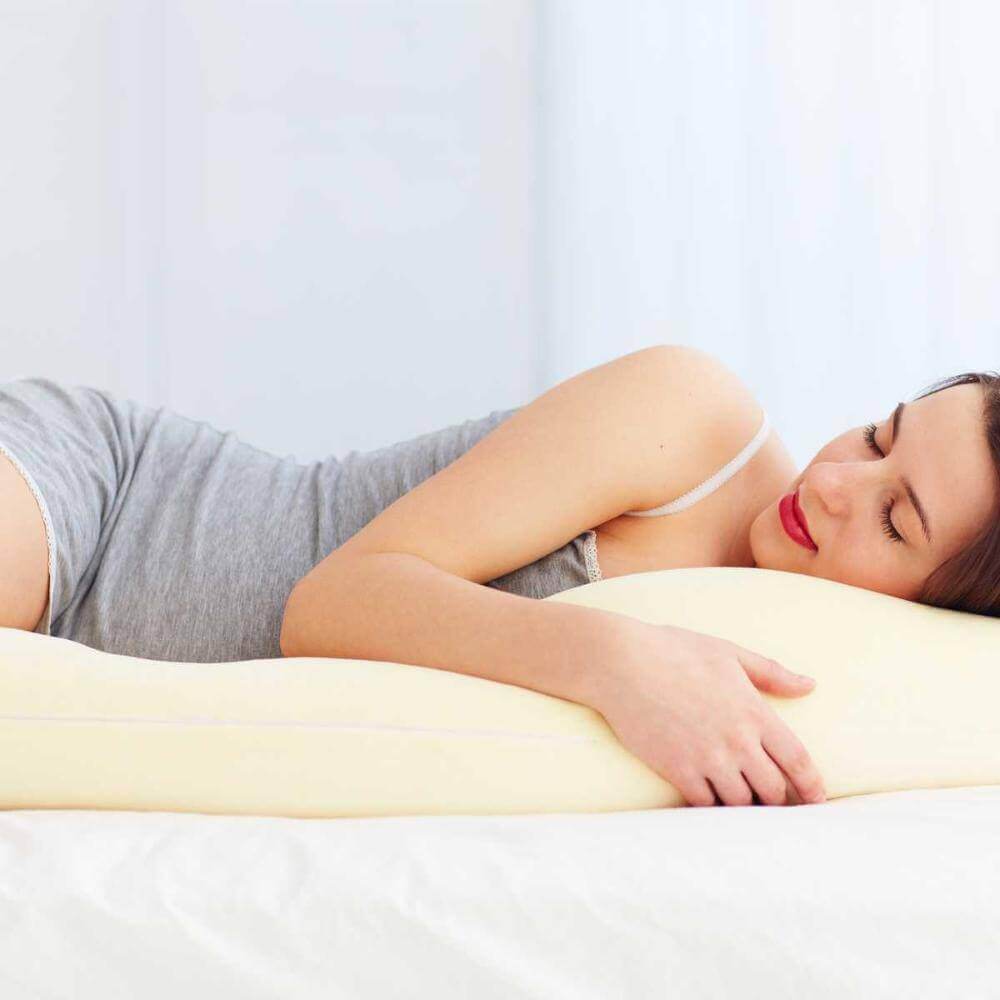
Managing Sleep Apnea with a Body Pillow
|
|
Tempo di lettura 3 min

Sleep is essential for our well-being, and we understand that a good...
|
|
Tempo di lettura 3 min
Using a body pillow can be a helpful comfort adjunct for Sleep Apnea—especially the positional type—but it is not a standalone treatment. If you suspect Sleep Apnea, seek a medical evaluation and follow your clinician’s plan. The ideas below focus on positioning and comfort that can support better rest alongside medical care such as CPAP, BiPAP, or oral appliances.
For the full series overview and related topics, visit the pillar: Sleep Disorders & Solutions — A Complete Comfort Guide.
In positional obstructive Sleep Apnea, breathing interruptions are more likely when sleeping on the back. Side-sleeping can help keep the airway more open. A full-length body pillow makes side-sleeping easier to maintain by anchoring the torso, stacking hips and knees, and gently preventing rollover onto the back.
Positional support can reduce nighttime fidgeting and help you remain settled longer. It complements, not replaces, your prescribed therapy.
Pregnancy can increase Sleep Apnea risk due to airway changes and side-sleeping recommendations. A supportive body pillow can cradle the bump, offload the lower back, and make left-side sleeping more sustainable.
See: Body pillows designed for side-sleeping support.
If you use CPAP or BiPAP, comfort can improve adherence. A body pillow helps you maintain a neutral, stable position so the mask feels less intrusive and straps remain consistent.
Helpful reads: Understanding Sleep Apnea and Side sleeping and comfort basics.
Discomfort from shoulders, hips, or lower back can increase nighttime micro-awakenings. A body pillow distributes contact more evenly and reduces twisting.
A body pillow cannot diagnose or treat Sleep Apnea. It supports comfort and positioning and may reduce positional episodes, but clinical care is the primary treatment path.
No. It does not cure or treat Sleep Apnea. It’s a comfort and positional support tool that may help reduce positional events and improve sleep quality alongside clinical care.
U- and J-shaped designs are popular for anchoring side-sleeping. Choose what suits your bed space and whether you tend to roll during the night.
Yes. Many users find that stable side-sleeping with a body pillow reduces mask leaks, helps straps stay in place, and makes CPAP or BiPAP more comfortable.
No. This article offers comfort-focused ideas only. Always consult your clinician for diagnosis and treatment of Sleep Apnea.
Disclaimer: This article shares lifestyle and comfort suggestions only. It is not medical advice. For assessment, diagnosis, or treatment of Sleep Apnea, consult a qualified healthcare professional.
Blog Post by Sanggol Blogs | Sanggolcomfort.com. Sanggol are manufacturers and retailers of Sanggol U Body Pillows | U Pregnancy Pillows, J Pregnancy Body Pillows, and C-shaped Body Pillow | Nursing Pillow.